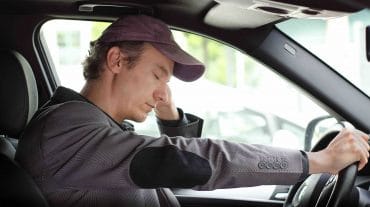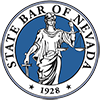
Tired Uber drivers put passengers and others on the road at risk. These drivers may be skirting Uber’s rest requirements by working for other rideshare companies or doing other activities instead of resting. While a rider cannot prevent getting a fatigued driver, he or she should be aware of the risk.
Uber’s Rest Requirements Are Easy to Swerve
There is currently no way to accurately monitor how tired an Uber driver may be. Because of this, these drivers put others at risk of injury if he or she is not well-rested and alert.
Uber requires drivers to go offline for six consecutive hours after driving a total of 12 hours. However, there are no controls to stop drivers from driving for other rideshare services during the required rest time or before the allowable 12 hours. Many drivers use ridesharing to supplement income. Therefore, a driver might also be working a full or part-time job or taking care of his or her children during the off-hours.
Drowsy Driving Is a Leading Cause of Accidents
According to the National Highway Traffic Safety Administration, almost 72,000 car crashes are caused each year because of drowsy driving. Driving while fatigued can happen when a driver has not received enough sleep, takes medication that makes them drowsy, or suffers from a sleep disorder. The risk of drowsy drivers increases when one or more of these factors are present or combined with consuming alcohol.
The risk of drowsy driving increases in the mid-afternoon, between the hours of midnight to 6 a.m., or if the driver has been driving for a long time without a break. NHTSA’s data shows that those most at risk for driving while tired are males between the ages of 16 and 29, those who work the night shift or irregular hours, or people with sleep disorders. A drowsy driver might fall asleep while driving. However, tired drivers:
- Have a slower-than-normal reaction time
- Take more risks behind the wheel
- May not pay attention to the road, other drivers, bicyclists, or pedestrians
How to Avoid Riding with a Drowsy Driver
Riders can take actions to avoid riding with a drowsy Uber driver. A rider should trust his or her gut if something does not seem right before entering the car. Riders can screen drivers by greeting or engaging the driver in light conversation. A rider has the right to decline the ride. If the passenger is already in the car before noticing that the driver appears drowsy, he or she may request that the driver pull over in a safe area to be let out. Once out of the vehicle, the rider is free to call for another ride or contact a friend or family member for a pick-up. If the driver refuses to let the rider out, the rider should call 911 to request help from the police.
For Uber, Lyft, and the rest of the rideshare industry, peak activity often occurs during late hours when bars are closing, during holiday seasons, and in inclement weather. During these busy periods, drivers receive surge pricing as an incentive to drive in less than desirable conditions. These drivers are likely tired and under stress to take advantage of the higher rates during this time.
Riders should check the reviews of the drivers they are assigned. Previous riders who use Uber or Lyft usually leave detailed reviews of the experience, especially when the experience was not ideal. There is no reason for riders to settle for a poorly reviewed driver when others are available.
Uber Accident Claims Often Become Complex
Accidents caused by drowsy drivers are often more catastrophic in nature than others. This is because of the driver’s delayed reaction time and increased risk of failure to take evasive action. Such accidents may include the driver crossing a double yellow line or drifting into oncoming traffic, the vehicle leaving the roadway and crashing, or drifting and failing to signal a lane change. Rideshare passengers are at the mercy of fatigued drivers who are lacking diligence and attentiveness.
Determining who is responsible to pay for Uber passengers’ injuries in a car crash can become complex because multiple entities may be liable for damages. This is especially important when the driver is not insured or is underinsured. A driver is responsible for upholding a duty of reasonable care to his or her passengers and others on the road. Drivers who get behind the wheel while tired violate that duty and if an accident is caused, they can be held liable. However, Uber and Lyft also owe their customers a duty of care. When they fail to keep passengers and other motorists safe because of an inefficient driver monitoring process, including making sure that drivers are sufficiently insured, rideshare companies may be held accountable.









